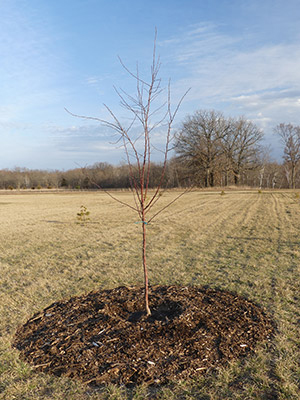And the comprehensive plan is neither comprehensive nor is it a plan
By
Will Collette
On Monday, April 19, the town will resume its “public hearing” on the long overdue re-write of Charlestown’s Comprehensive Plan. Planning Commissar Ruth Platner took over the process from the beginning, so she could slow down the actual completion of the plan, in my opinion.
She
has no real self-interest in a new plan because, without one, she could
continue to control Charlestown land use by simply making stuff up or by doing
things to please her friends and cronies, whether it’s buying over-priced
property or building ridiculous asphalt bike paths.
But if the Plan is adopted, she also gets what she wants which is to freeze Charlestown land use policy like a bug in amber.
The
Comprehensive Plan is a document required by the state and used to guide a
municipality through the future. Our current comprehensive plan expired in 2013,
although Planning
Commissar Platner promised in 2012 it would be done on time. Well, gee,
only eight years late.
But
now we have a “final draft” for what it’s
worth, and Ruthie and town rulers, the Charlestown Citizens Alliance (CCA Party), are going
through the motions of taking public input.
It’s
hard to get your arms around a document that is novel-sized (367 pages) though
it helps to think of it as a novel. The theme is that Charlestown is rural,
must stay that way and thus the Plan relentlessly hammers on the importance of
“rural character,” even though there is NO definition of what that is. I
flagged this lack
of a definition in this 2016 article.
Chapter
1 does provide a list of things (page 2) that kind of hint at rural character and mainly found on
small roads north of Route 1. The Plan does not try to characterize south of
One as rural but rather as having “small town character” because it is like a
“summer colony.” None of these terms are defined either.
For almost 30 years before I retired, I travelled to all 50 states, visiting most at least twice going to real rural areas from Appalachia to the Deep South to the Plains to the desert Southwest and all points in between.
I
love living in Charlestown, but it’s not really rural. It’s more like suburban, except without any public services, unlike our neighbors, Westerly and South
Kingstown.
To
make a Plan grounded in reality, we should stop with the fairy tale version of
Charlestown despite Ruth Platner’s efforts to hypnotize us into believing her
story, most elaborately displayed in Chapters 2, 3 and 11.
These
are the largest sections, comprising just under 150 pages, and address “Natural
resources,” “recreation” and “land use.” By reading the rest of the plan, it’s
clear that these are the three chapters that count the most to Planning
Commissar Platner.
They,
plus Chapter 1, constitute Platner’s Ode to Rural Character. Rather than go
through hundreds of pages of notes, you can summarize Ruthie’s rural paean with
this:
Trees
BY JOYCE KILMER
I think that I shall never see
A poem lovely as a tree.
A tree whose hungry mouth is prest
Against the earth’s sweet flowing breast;
A tree that looks at God all day,
And lifts her leafy arms to pray;
A tree that may in Summer wear
A nest of robins in her hair;
Who intimately lives with rain.
But only God can make a tree
And that’s fine if you like classics you read in grade school. I like trees, too. But in Ruth Platner’s vision
of Charlestown, there’s never enough space for trees unless you get rid of
those pesky human beings. NOTE: I detected some satisfaction in Platner's narrative about Charlestown's shrinking, aging population that made fools of state planners who projected significant population growth.
In Ruth Platner's Charlestown, people, especially children, are the enemy and there will be no growth on Ruthie's watch.
According to the Plan (Chapter 11, pages 4-5), Charlestown’s total
area is 59.3 square miles of which 22.5 square miles (37.9%) are water. Tax
Assessor data on page 5 shows 59.7% of Charlestown’s land is either tax
“exempt” or undeveloped. Whether you include water or not, that’s a lot of open
space.
I would argue that this is just about all the open space we need,
but note that this Plan calls for even more open space acquisition. I doubt it
will end until everyone except the rich folks along the shoreline are gone. Plus Ruth and Cliff’s compound on Charlestown’s northern border
Focus is on low-wage, no benefit jobs
As Ruth writes in the non-nature chapters of the Plan, Charlestown
is a “commuter town” (Chapter 9, page 7) although 22% of the town’s residents
actually work in town. The Kenyon textile factory on South County Trail is the
town’s largest employer. Other in-town businesses mostly deal in services, agriculture
and aquaculture which means comparatively low wages and no benefits.
And that’s fine with Ruth who expresses no interest in helping any
town businesses unless they are serving our influx of summer people. Chapter 9
is titled “Economic Opportunity” but to sum it up, unless you’re slinging
burgers for summer people, there aren’t any economic opportunities.
Bikes über alles
 |
| This would be Ruth Platner's perfect Charlestown transit solution: Uber's new "Jump" service of electric bikes. Trial runs in Europe and selected US cities. |
The Transportation section (Chapter 8) is especially obnoxious. Ruth sums up Charlestown’s future transportation needs this way:
“It is not anticipated that Charlestown’s predominantly tourist and recreation economy will require or invite other traditional components such as year-round bus and train service” (8-3).
What we do need, says Ruthie, are many, many more bike paths just because
(and Faith LaBossiere won’t shut up about them). Soon, you won’t be able to
tell the difference between Charlestown and Amsterdam. Except Amsterdam has an
extensive tram system, not to mention canals and lots of people is a very
densely populated city.
Drive your car if you must – and if you're among the 78% of Charlestown residents who work out of town, you must – but
Charlestown’s preferred mode of transportation is by bicycle, followed by
walking.
In the same section, Ruth acknowledges that Charlestown’s
population has been steadily aging, leading to an increase in the number of
people who can’t drive. Still, she doesn’t acknowledge that not everyone is fit
enough to ride a bike. Perhaps a little social Darwinism at work.
This plan could have said we would try to get RIDOT to connect Westerly and South Kingstown along Route
1 through Charlestown linked with the major bus hubs in both towns. Or perhaps experiment with a paratransit system to get
residents to main bus lines or the MBTA. But no.
For those who don’t have a car and can’t use a bike to get where
they want to go, Ruth offers this solo solution: call Uber. (Chapter 8, page 20).
Seriously.
Not
much to say about energy
 |
| This is illegal in Charlestown |
The chapter also spends a fair amount of space discusses utility-sized energy projects Charlestown has blocked.
Even though much of Charlestown South of One will be underwater due to climate-driven sea level rise, there are virtually no innovative or aggressive measures proposed to cut Charlestown’s carbon footprint. However, in a brief passage, the Plan seems to suggest we burn more wood except that doesn't reduce carbon emissions at all.
I would love to see a
revival of the “Solarize” program, a repeal of Charlestown’s ordinance that virtually outlaws residential wind energy and property tax credits for green
energy investment for starters, but you won't find that in this plan.
A
deal with the Narragansetts?
 |
| The Tribe tried building senior citizens affordable housing but were blocked by Charlestown |
It
omits any mention of the decade long campaign by CCA-endorsed Town Council
members to get the state to exempt
Charlestown from state law requiring a reasonable amount of affordable housing.
We played the unique “rural character” card that argued that we were just so
special that we should be exempt from the law.
In
that, CCA town leaders revealed the hidden code behind the incessant use of the
term “rural character. In this context, “rural character” clearly means at
worst “no people of color” and at
best, “no families with children.”
But
remarkably, the Plan now seems to anticipate some deal between the town and the
Narragansett Indian Tribe for the Tribe to build affordable housing for its
members, which the town will then count against its legal requirement. Here’s
the language:
Chapter 10, Page 1 Another overriding theme woven throughout the town is the Native American heritage which may also present opportunities for subsidized housing going forward.
Page 23: Action 4 Continue efforts with the federal government and the Narragansett Indian Tribe to encourage affordable housing opportunities for tribal members in the community
The
Tribe has wanted to do this for a long time. In
1991, when it tried to build a plat of affordable housing for the elderly, Charlestown sued
on the belief that somehow the Tribe planned on sneaking a casino into any such
development. That case evolved into the Carcieri v. Salazar ruling that
disenfranchised more than 500 native tribes across the US, including the
Narragansetts.
However,
before you get excited, the actual amount of housing resulting from town-tribal
“collaboration” is maybe a couple dozen based on Chart HC-5.
Also
bear in mind that, according to his invoices to the Town, the town’s
Indian-fighting lawyer Joe Larisa (rehired on a CCA Party line vote) spent a
large number of hours on this.
If the town and the Tribe did consider collaborating on affordable housing, Larisa would make sure that the Tribe does exactly what the town wants.
Further,
whatever sign of good faith that may be signaled in the nod to tribal
affordable housing is negated by the gross revisionism of the history of the
Tribe’s dealings with the white settlers, starting with the 1675 Great Swamp
Massacre.
According
to the Comprehensive Plan, the Tribe owned 135,000 acres in 1705 but lost all
but 15,000 due to “debts” native land holders owed to the white settlers.
Other, more honest histories refer to these land grabs as frauds pulled off on
tribal members unfamiliar with English/American law and business practices.
The
Plan highlights the 1790 federal Non-Intercourse Act that generally forbade the
taking of Indian land except by act of Congress. This law did nothing to protect the
Seminoles, Cherokee, Nez Pierce, Lakota, Navajos and many other tribes, including the Narragansetts, who were
driven off their lands.
The
Plan OMITS any mention of Rhode Island’s infamous 1880 Rhode Island de-tribalization
law that decreed the Narragansett Indian Tribe no longer existed. This led to
all but one acre of the Tribe’s land being stolen from them by 1882.
The
Plan omits the Indian Reorganization Act of 1934 and the infamous 2009 Carcieri
v. Salazar US Supreme Court case that diminished the Tribe’s sovereignty by stripping it of the protection of the Act.
The
clear racial bias shown in the Plan’s revisionist history would appear to be
the result of the many hours listed on the town’s
Indian Fighter Joe Larisa’s invoices to the town for work done on the
Comprehensive Plan. This Plan has Larisa’s grubby fingerprints all over it.
